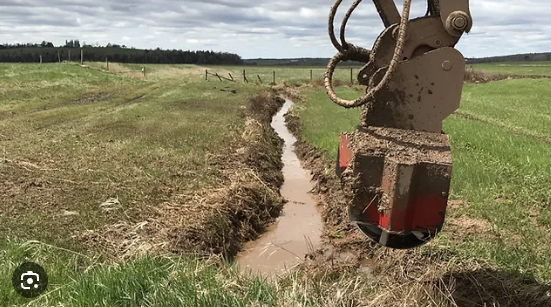I have always heard of the amazing statistics involved with soil runoff and its disturbing loss downstream. I recently viewed firsthand the remarkable amount of runoff in my little corner of the world.
I rent/use a neighbor’s pasture area for grazing in exchange for maintaining the fence and grounds. The roadside portion of the field is fairly low and tends to stay wet, making it less than suitable for grazing forages because of the wet ground. The roadside ditch is probably less than an 1/8 of a mile in length. In an attempt to try and drain the field better, I requested the town dig out the ditch so there was a place for the water to run off and provide better drainage. I am not aware of how the field was used before I took it over, but can imagine it was conventionally plowed and used for a grain crop.
The town was reluctant to do the digging until I offered to take care of the ditch digging myself, thinking “how much could there be in this short length of ditch?” I was aghast when I saw the amount of topsoil that came out from the ditch area. The pile was HUGE. In volume, I’m sure it was over 100 cu. yds. of soil. Most people would love to have this top soil, but unfortunately years of people throwing their trash in the ditch, along with the frequent beer drinker disposing of their bottles and cans, make it unsuitable as a growing medium.
I haven’t yet figured out how to use this resource other than to fill in low-lying areas in our wooded grounds. My hope is that at least the ten acre piece of ground adjacent to the ditch will start to flourish with better grazing forages due to better drainage conditions. The trials and tribulations of regenerative farming!

